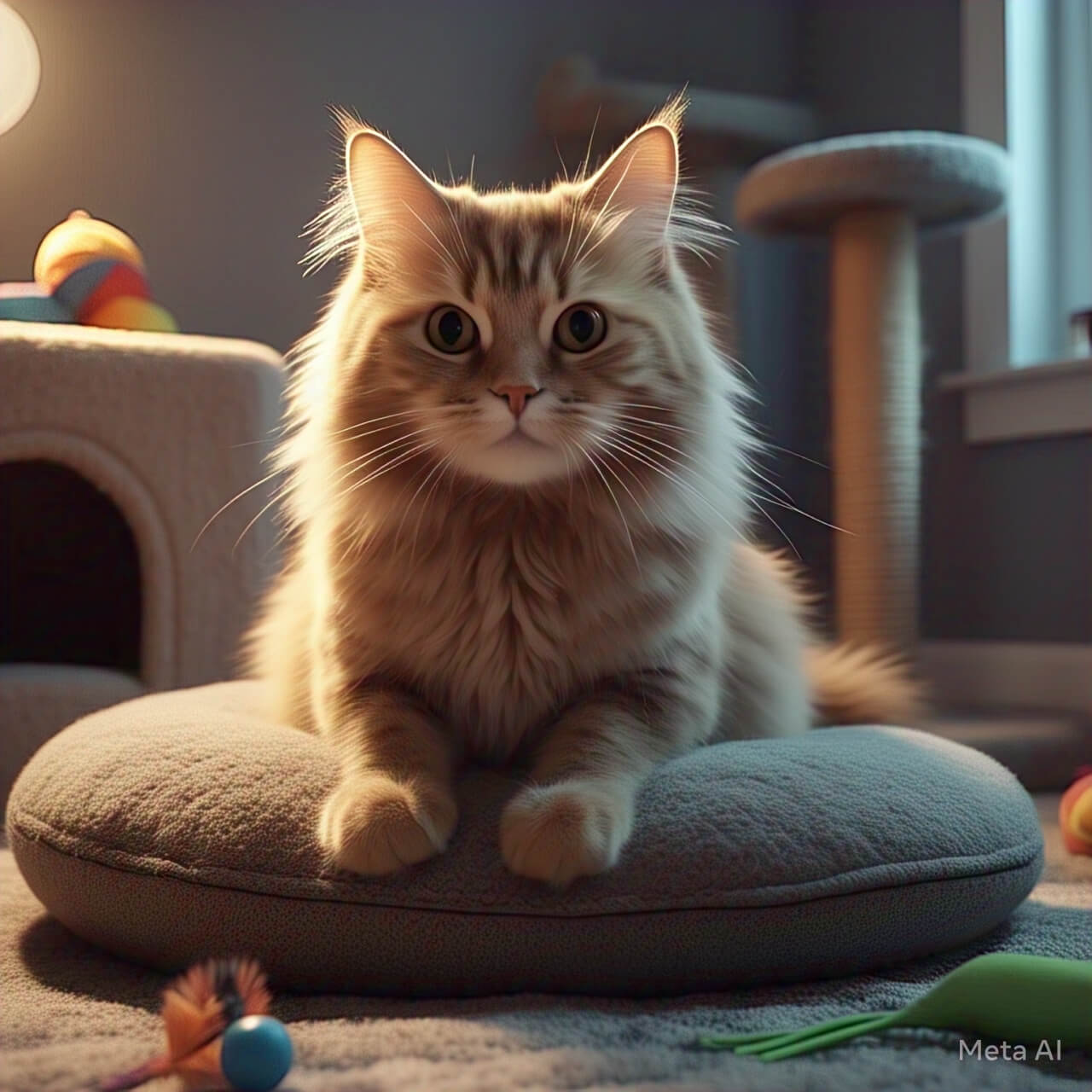How to Help a Cat with Anxiety: Cats, like humans, can feel anxious. Changes in their environment, loud noises, or past trauma can make them nervous. An anxious cat may hide, meow too much, scratch furniture, or even stop eating. Helping your cat feel safe is important for their health and happiness. First, watch for signs of stress—like shaking ears, a twitching tail, or avoiding people. Once you know your cat is anxious, you can take steps to calm them. Create a quiet space where they can relax, away from noise and other pets.
Use soft blankets and toys they love. Playing with your cat helps them release stress. Gentle petting and talking in a calm voice can also comfort them. Some cats need extra help, like special treats or vet-recommended calming sprays. If your cat’s anxiety is severe, a vet may suggest medicine. Never punish an anxious cat—it will make things worse. Instead, be patient and give them time to adjust. With love and care, most cats learn to feel safe again.

10 Easy Tips to Calm an Anxious Cat
- Create a safe space
- Use calming sprays
- Play gentle music
- Stick to a routine
- Give them hiding spots
- Use slow blinking
- Try pheromone diffusers
- Offer interactive toys
- Avoid sudden changes
- Visit the vet if needed
1. Understanding Cat Anxiety
Cat anxiety happens when a cat feels scared or stressed. Common causes include moving to a new home, loud noises (like fireworks), or being left alone too long. Some cats get anxious after a bad experience, like a visit to the vet. Signs of anxiety include excessive grooming, hiding, aggression, or peeing outside the litter box. Knowing what triggers your cat’s fear helps you fix the problem. Watch their behavior closely—do they run when the vacuum turns on? Do they hide when guests come over? Once you find the cause, you can help them feel safer.
2. Signs Your Cat is Stressed
Not all cats show anxiety the same way. Some may meow constantly, while others become very quiet. Look for signs like dilated pupils, flattened ears, or a puffed-up tail. They might also lose their appetite or scratch furniture more than usual. A stressed cat may lick themselves too much, causing bald spots. If your cat suddenly changes their behavior, anxiety could be the reason. Paying attention to these signs early can prevent bigger problems later.
3. Creating a Safe Space for Your Cat
Cats need a quiet place where they feel secure. This could be a cozy corner with a soft bed or a covered cat tree. Make sure the area is away from loud noises and other pets. Add familiar smells, like their favorite blanket or an unwashed shirt with your scent. Some cats like small, enclosed spaces—try a cardboard box with a soft towel inside. Never force your cat out of their safe space; let them come out on their own when they feel ready.
4. Using Calming Products
There are many products to help anxious cats. Pheromone diffusers (like Feliway) release calming scents that mimic a mother cat’s natural smell. Calming sprays can be used on bedding or furniture. Some cats respond well to anxiety wraps (like Thundershirts) that provide gentle pressure. Always check with your vet before trying new products, especially if your cat has health issues.
5. The Power of Routine
Cats love routine because it makes them feel secure. Feed them at the same time every day. Keep their litter box clean and in the same spot. Sudden changes—like moving furniture or bringing a new pet home—can stress them out. If changes are necessary, introduce them slowly. For example, if you get a new cat, keep them separated at first and gradually let them meet.
6. Play Therapy for Anxious Cats
Play helps cats release stress and build confidence. Use interactive toys like feather wands or laser pointers to engage them. Short play sessions (10-15 minutes) a few times a day can reduce anxiety. Avoid rough play if your cat gets easily scared. After playing, give them a treat to create positive feelings.
7. How Slow Blinking Helps
Cats communicate with their eyes. A slow blink is like a smile—it shows trust. Try sitting near your cat and blinking slowly at them. If they blink back, it means they feel safe with you. This simple trick can strengthen your bond and reduce their anxiety.
8. When to See a Vet
If your cat’s anxiety doesn’t improve, see a vet. They can rule out health problems (like thyroid issues) that cause stress. In severe cases, the vet may prescribe anti-anxiety medication. Never give human medicine to cats—it can be dangerous.
9. Avoiding Punishment
Yelling or spraying water at an anxious cat makes things worse. Instead, reward calm behavior with treats and praise. If they scratch furniture, provide a scratching post nearby. Positive reinforcement works better than punishment.
10. Long-Term Solutions
Helping a cat with anxiety takes time. Be patient and consistent. Some cats improve quickly, while others need months of care. If one method doesn’t work, try another. With love and effort, most anxious cats can learn to feel safe again.

FAQs About Cat Anxiety
| Question | Answer |
|---|---|
| Can cat anxiety go away on its own? | Sometimes, but most cats need help to feel better. |
| What natural remedies calm cats? | Pheromone diffusers, calming music, and catnip can help. |
| Should I get another cat for company? | Not always—some cats get more stressed with another pet. |
| Can diet affect cat anxiety? | Yes, some foods have calming ingredients—ask your vet. |
| How long does it take to calm an anxious cat? | It depends—some cats improve in weeks, others take months. |
By following these tips, you can help your anxious cat feel safe and happy. Always be patient and loving—your cat trusts you.








